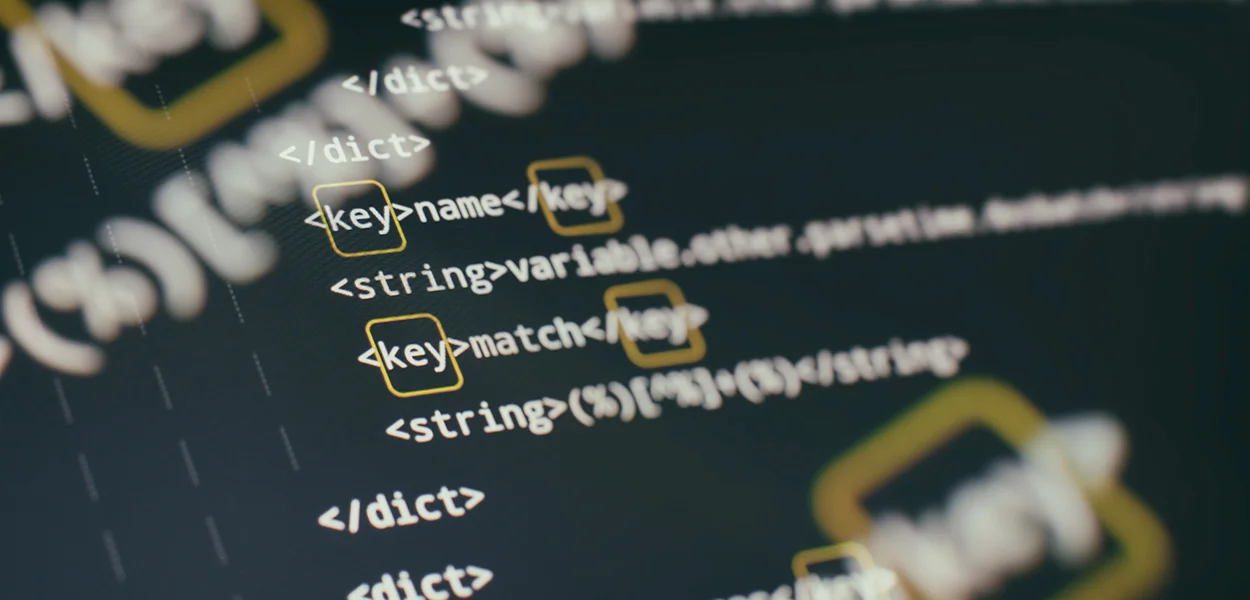Go vs. Java: Which Programming Language to Choose?
Go vs. Java: Which Programming Language to Choose?
Sept 7, 2023 15:10PM
Go vs. Java: Which Programming Language to Choose?
Sept 7, 2023 15:10PM

The need for faster and simpler software applications is urgent. It is the best way to stay competitive and be the leader in the market. It is a challenge for developers to choose tools that meet these criteria. Before beginning a new project, they must carefully examine their options to ensure they choose the correct language or tool.
In many ways, Golang and Java are similar. They also have some differences. Understanding the roots of the languages is essential to selecting the correct one. This blog examines languages' features, pros and cons, similarities, and differences.
Golang and Java are two of the most widely used programming languages. These languages are used for developing robust web, server, and mobile applications. Golang is known for its low learning curve, simplicity, and flexibility. Java is renowned for its reusability and flexibility of code.
They all share the following: they are cross-platform, use standard libraries, and perform memory management via garbage collection and concurrency. Would you like to know more? Continue reading!
Golang is a new, open-source procedural and compiled programming language. It was created by Google computer scientists Rob Pike, Robert Griesemer, and Ken Thompson in 2009 and released. Golang is an easy-to-learn, understand, and use language.
Its static typing feature lets developers quickly create lightweight, maintainable, and testable code. Golang's simplicity and scalability are why it is so popular. Golang is a popular programming language among software developers because of its excellent features, such as concurrency and garbage collection. It also has native binaries and a fast compilation time.
With the built-in benchmarking and testing facilities, you can quickly review and debug your Go code. Golang simplifies the deployment process by combining all dependencies into a single binary. Golang allows you to build large applications without any problems.
Java is an open-source programming language first released in 1995 by Sun Microsystems. From humble beginnings, it has grown to be the platform on which many digital services and applications today are built.
Java is an object-oriented programming language that's popular for general-purpose applications. It has a virtual machine that converts the code to bytecode at runtime. Java software development is suited for various applications, including web and desktop applications. It also caters to mobile applications, machine learning, internet applications, data science, etc. Java is a versatile language that can be executed anywhere. It can also act as an interpreter or error detector.
It is an excellent tool for developers because it has a lot of pre-built code, modules, and libraries. This makes it easy to find the correct code for a specific purpose. It supports concurrent, generic, functional, and imperative programming. It provides a portable, secure, and versatile user interface. It is ideal for developing different types of apps and is cost-effective.

Learn the main features of Golang by looking at the points below:
Golang has readable and statically typed codes: Its simple syntax allows developers to write neat, safe code. Golang codes are easy to read and understand for beginners. You can also maintain and modify the Go code easily. The language's no-type inheritance feature improves code clarity.
Multiple Toolsets: Golang has an extensive tool set that can be used to improve the efficiency of Golang applications. These tools can be downloaded from the GitHub repository. This repository contains a variety of IDEs and plugins that we can use to enhance Golang applications.
You can choose from tools like Emacs (for example), VSCode (for example), Vim (for instance), Atom, Sublime, and Eclipse. You can also download a few cloud-based IDEs.
Concurrency: Concurrency is an excellent feature of Golang and is achieved by Goroutines. Goroutines allows code blocks to run independently and simultaneously, with support from multi-core CPUs. No wonder you can run thousands of Goroutines simultaneously. Also, channels allow Goroutines to communicate and exchange data safely.
Massive Data Processing: Golang is a powerful tool for processing large amounts of data. It has high computing speed and reliability. It can process a large amount of data with ease. Therefore, Golang is used by YouTube, SoundCloud, and Netflix to handle tons of data. It is possible with the help of database technologies like cockroach DB or influx DB.
Garbage Collection: Garbage collection is nothing more than a memory management technique used in Golang. Garbage collectors automatically release data from memory when it is no longer needed. This eliminates the need for manual memory management and prevents errors and memory leaks. Garbage collectors are a great way to improve the productivity of software development.
Java is a popular language because of its many features. Take a look:
Java is an object-oriented programming language. It supports OOPS principles such as polymorphism and inheritance. Java code is designed in a similar way to C++ and C code. It allows you to write modular, reusable code quickly.
Java is portable: It follows the Write Once and Run Anywhere concept. Java code can be compiled across all platforms without writing cross-compiling code. Platforms can be server, client, or network machines, but they must all have a Java Virtual Machine (JVM). Java code is converted into intermediate code to achieve portability. The intermediate codes, in this case, are called Java Bytecodes. These bytecodes are similar to machine code in a sense.
Java supports multithreading: Java supports the simultaneous execution of different blocks in a program. The threads are independent of each other and do not affect each other.
Multithreading: Multithreading can significantly improve CPU and memory utilization. Multithreading eliminates the need to execute code one by one. Multithreading simplifies and speeds up complex applications.
Garbage collection: Java uses garbage collectors for memory management, similar to Golang. Garbage collectors manage the lifecycles of objects automatically and efficiently. You don't have to manage object references or reallocate memory manually. The garbage collector recovers memory automatically when it is no longer needed. You can avoid memory leaks and even errors.
Standard Library: Java includes a rich standard library. The library contains core libraries, UI libraries, plugins, integration libraries, and APIs. Java SE7 has, for example, 4000 standard APIs that you can use to develop applications without having to write code again.
Core libraries include functional programming, security, concurrency, and XML processing. UI libraries also include abstract window toolkits and swing libraries.
Security: Java uses implicit pointers to refer to objects. It avoids buffer overruns and violates memory access. Java also uses bytecodes, which are not usually readable by humans. Java runs its programmes in a sandbox, which restricts unauthorised changes.
There are many differences between Golang and Java. Below, we will discuss this in more detail:
Language: Java has OOPS based on classes, objects, and constructors. It offers flexibility and allows for code reuse. You can create complex applications. Golang, on the other hand, is a procedural programming language that does not have classes or objects. It is, therefore, superficial and unsuitable for complex application development.
Syntax and Ease of Coding: Golang's syntax and ease of coding are both critical. As we mentioned, Golang uses a statically typed language. Its syntax and parentheses are simple. It allows for quick and easy coding. Golang has mainly less than 25 keywords.
On the other hand, Java syntax is not as simple as Golang. Java requires you to use classes and objects. Coding in Java is more complicated than in Golang.
Garbage collection: Golang has a vital feature, but Java does not. Garbage collection is also one of Golang's highlights.
Concurrency: Both languages support concurrency. Golang uses goroutines, while Java uses multithreading. Goroutines, however, are more efficient than Java's multithreading. Goroutines consume less memory than threads. Goroutines are only 2 KB in size. Java, on the other hand, uses threads in place of goroutines. Threads use 2 MB of memory.
Speed: Golang's garbage collectors automatically release unused memory. The result is an increase in execution speed. On the other hand, Java runs on virtual machines, which decreases execution speed.
Cross-platform: Golang and Java both depend on each other. Golang requires binary files to run on different platforms. On the other hand, Java requires Java bytecodes to do the same. In Golang, you must prepare separate binary files for each platform, which can be time-consuming. Java bytecodes are also able to be executed on any platform.
Frameworks: Java frameworks are well-established, while Golang frameworks such as Spring are unpopular.
Golang's pointers help to transfer data through references. Java, on the other hand, does not use pointers. In Java, another one is reflection. It is more complicated in Golang. No class is available in Golang, so you can only use package reflection.
Error Handling: Java uses exceptions for error handling. Golang, on the other hand, does not use exceptions and only uses errors.
Golang, in short, is the latest procedural language that is statically typed. On the other hand, Java is the original, OOPS-based, and imperative language. The question is, which language or one should you choose? Answer: It's simple. Each language has unique features that make it superior to others. Choosing the correct language is based on developer requirements. Java is a good choice if you plan to create a mobile app or a complex application. Golang is an excellent choice for creating a faster, more straightforward data-processing application. It would be great!
Strategy
Design
Blockchain Solution
Development
Launching
Testing
Maintenance
Contact US!

Plot 378-379, Udyog Vihar Phase 4 Rd, near nokia building, Electronic City, Phase IV, Sector 19, Gurugram, Haryana 122015
Copyright © 2025 PerfectionGeeks Technologies | All Rights Reserved | Policy
Contact US!

Plot 378-379, Udyog Vihar Phase 4 Rd, near nokia building, Electronic City, Phase IV, Sector 19, Gurugram, Haryana 122015
Copyright © 2025 PerfectionGeeks Technologies | All Rights Reserved | Policy